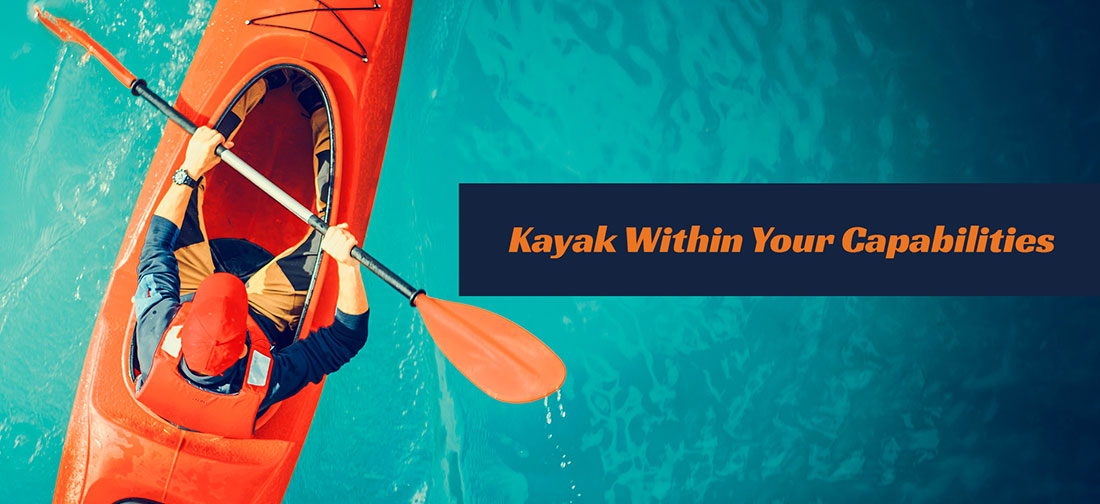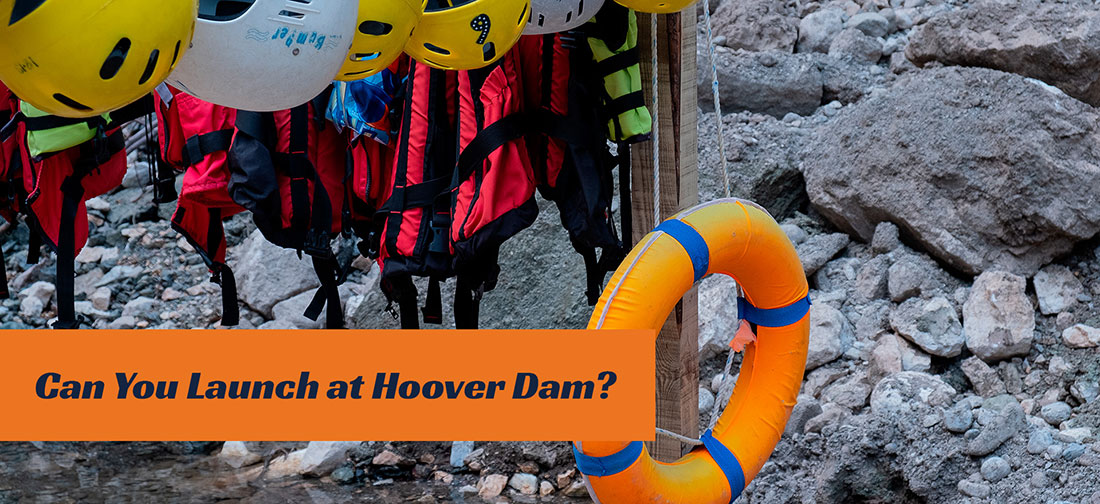What are five safety precautions you should take when kayaking?
Kayaking is a great way to explore the beautiful natural areas of Nevada and get a good workout. Before you go on a spectacular Vegas kayak tour, you’ll want to be prepared for a kayaking adventure. While everyone wants their kayaking trip to go smoothly, keeping safety in mind on your journey is an excellent way to ensure that your kayaking in Vegas adventure ends positively. If you’re new to kayaking, Blazin’ Paddles has some essential safety tips.
Kayak Within Your Capabilities
If you are going on a kayaking tour, it’s best to perfect your kayaking skills before your tour begins. Whenever you’re learning a new maneuver or paddling stroke, or if you’re planning Las Vegas kayak tours on waters that are more challenging than what you’re used to, you’ll want to master the art of those challenges before you go out with a group. Ideally, you can practice in lessons and build up your kayaking skills and confidence before heading out to the open water. Before you go out solo or with a group in your kayak, you should be able to check off the boxes for these top five basic kayaking safety rules:
If you’re deciding what kind of kayaking tour to go on, several things must be considered to ensure your outing is safe. For starters, look for calm and flat waters. Heavy surf and rapids are more challenging waters that are best left for expert kayakers. Smaller bodies of water are more suitable for novice kayakers as they have fewer hazards, such as wind and waves. Small lakes and ponds are ideal for kayakers who want to gain confidence out on the water just learning the sport. If you’re thinking of setting off on your own in a kayak, at least choose a place popular with other kayakers.
If you are on an Emerald Cave kayak tour with others, they may be able to assist if you encounter problems. Power boats can also present a hazard to kayakers. If possible, choose to go kayaking in a place with minimal traffic from powerboats or go kayaking in Vegas only in places where powerboats are prohibited. Since kayaking tours in Vegas can be long, you may also want to find a tour where you’ll have the tailwind at the back when you’re heading home, if possible.

Bring the Right Safety Gear
When you’re kayaking in Vegas, you’ll want to ensure that you wear the proper safety gear or at least have it on your boat.
At a minimum, your kayaking safety kit should include:
- Whistle
- PFD
- Communication Device
- Bilge Pump
- Spare Paddle
- Paddle Float
- Headlamp
- Towline

A whistle and personal flotation device (PFD) are two key safety items to take with you on kayaking tours in Vegas. A whistle can be easily attached to your PFD, which makes it even more worthwhile to carry it along with you. While bringing a whistle along is a good place to start, you’ll also want to know how to use it. One blast of the whistle is a call for attention. Blowing your whistle once means you might need assistance, but you’re not necessarily in an emergency. Blowing the whistle three times, on the other hand, is a signal for help.
A communication device is also essential to bring along. If you are kayaking in a place with cell service, you’ll be fine bringing your cell phone along and storing it in a waterproof bag or case. If cell service is iffy where you’re going, have some other method of communication available instead, such as a VHF radio.
If you’re in a situation where you need to bail water out of your boat, a bilge pump is another great safety item to have on hand. If the bottom of your kayak gets swamped and needs to be bailed out, or if the boat capsizes and fills with water, a bilge pump can help remove the excess water quickly. That will keep the boat from sinking and help you get back in the boat and to safety more rapidly.
If your boat has the capacity, you might want to bring a spare paddle. A spare paddle is also valuable if you’re planning on going on a kayaking expedition with a group of people. While each paddler should plan to bring their own paddle, a group can share one or two paddles and take turns carrying the paddles to make things easier for everyone.
Having a paddle float with you when kayaking is also a good idea. The paddle float is a self-rescue mechanism that requires some training to use, so you should know how to use it in case you need to perform a rescue out on the water. Everyone in the group should learn how to use the paddle float since you’ll need to know how to use it if the group rescuer cannot assist. A paddle float provides outrigger support when the other paddle blade is attached to your boat. Paddle floats can be made of various lightweight materials, including foam.
Bringing a headlamp along is a wise idea, even if you don’t think you will be out paddling after dark. A headlamp is a great tool for kayaking in the same areas as power boats, regardless of the time of day. Even if you don’t expect to be out after dark, it’s best to prepare for an emergency in case you come back later than anticipated.
A towline will come in handy if you or another kayaker in your group needs a tow back to shore and can’t make it back solo.
Prepare for Immersion
Going on a Hoover Dam kayak tour means you may get wet, whether or not you intend to. It’s best to dress based on the water temperature instead of the air temperature you’ll be paddling in, keeping in mind that the water temperature is often warmer at the surface level. Dress accordingly by wearing layers and a wetsuit if water temperatures are under 70 degrees Fahrenheit.
Don’t Go Alone
Kayaking solo may sound like a romantic notion, but it’s much safer to go kayaking with a companion. If you’re out with others, it’s easier to get a tow if needed and assistance in case you’re injured or can’t otherwise make it back to shore. When out with a group, ensure everyone stays together or is in earshot of each other at all times.

Check the Local Weather
Weather conditions are critical for kayakers. Even a kayaking spot that may be safe on a clear and windless day can turn hazardous when storms pick up. When lighting is in the forecast, stay off the water, and get off the water if lighting strikes when you’re out.
For more on safe kayaking, contact Blazin’ Paddles today.

